Wine has always been one of life’s greatest pleasures, an experience that unites several senses and gives us unique emotions and sensations. Today we will see together how to taste wine in order to best appreciate each specific scent it can offer.
Tasting wine is something truly ‘romantic’, the wine is telling itself to us who are tasting it, fully expressing its flavours and scents. It is precisely in order to respect this almost romantic state that wine tasting has precise steps to follow:
- Wine Observation
- Analysis of the sense of smell
- Taste Analysis
These 3 aspects must be analysed in succession in order to taste wine at its best.
How to become tasting champions
One very often wonders what technique a professional sommelier uses to distinguish fruity notes or other scents within a wine. This is a question asked by many people even at official sommelier courses.
But there is no secret or precise technique for tasting wine at its best, there is simply training. Yes, you read that right, training, what we normally do in the gym or with a jog. Our nose and palate can be trained to recognise and link a flavour to something well known to us. This gives rise to the classic scents of fruit, spices, flowers and all the other aromas, which you would not normally smell.
You too can train your senses. How to do it? Simply by continuing to taste new wines and trying to recognise even the smallest nuances.
How to Taste Wine: Where to Start
A first step into the world of wine tasting can be taken by starting to practise drinking a wine you already know and a wine you do not know. In this way, you can compare the two wines and start a little journey between flavours and smells you already know and those yet to be discovered.
In these early stages, get a notebook and pen and write down your feelings after the tasting, and especially experiment when you are focused on the wine and discovering new flavours.
Some simple rules to get started
There are a few small rules that will make your approach to wine tasting easier.
Always start with the lightest wine. This little trick will allow you not to cover up the flavours of the wines that follow. We recommend following a scale that always starts with lighter wines and gradually moves towards more full-bodied and structured wines.
Do not rinse your mouth out with water, but wait until the taste of the wine has worn off on the palate. Rather than washing the glass with water, use a new one.
If there are many wines to be tasted, it would be appropriate to spittoon (a kind of container that is used specifically to collect the wine tasted).
First phase of a tasting: Observation
The first phase of wine tasting is that of analysis. Take some time to look at the bottle, noting down the most relevant information on the label.
You can start pouring the wine into the glass, preferably in a modest amount, this will allow you to better observe its colour and consistency. The colour of the wine is one of the first aspects to consider, you must check that the colour of the wine conforms to the type of wine (e.g. Trebbiano d’Abruzzo should have a straw-yellow colour), if some traits differ, you can note this down.
How to Taste Wine: Perfumes
Smell the wine, try to smell all the aromas it releases and see if there are any similarities with something you already know. In other words, you start with a general analysis and then turn to the detail.
Don’t be too quick, after having sniffed the wine once, wait a couple of minutes and repeat the olfactory experience to analyse the possible presence of new odours.
Don’t forget to also sniff the cork (only if it is made of cork, otherwise you can skip this analysis) to try to catch the smell.
This is one of the most delicate steps within wine tasting, one that requires experience and a lot of practice.
Wine swirling
Very often we are asked, why is a wine swirled in its glass? This is a technique that allows the wine to release more of its characteristic aromas. Doing so is actually very simple. Hold the goblet firmly and swirl the contents with a firm movement.
Once you have completed this small step, bring your glass closer to your nose, breathe gently and deeply, let yourself be carried away by your first impression of the wine (the first impression is the one that counts).
Taste analysis of wine
The last step within a tasting is the palate test, i.e. tasting. Put your lips to the goblet, take a sip and try to discover its flavours and scents. After ‘analysing’ the first sip, try a second. Try to discover all the characteristics of the wine: freshness, structure, body.
To best taste the wine, one must first note the initial taste, then the intermediate and finally the final taste. In this way, we will recognise the flavours that our taste buds most recognise as sweet, bitter, sour and salty.
Tasting passion?
Do you have a passion for wine and want to taste it at its best? With this guide you will be able to impress your friends just like a real sommelier. Make sure you drink the wines in company and surround yourself with people who can express other opinions while improving your list.
Wine is an experience to be lived to the full, a moment of pure personal and meditative pleasure, which cannot be the same for everyone.





